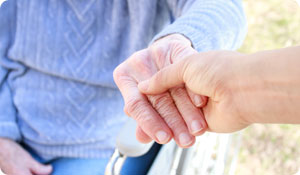
The word arthritis means "joint inflammation" and can refer to any one of more than 100 different diseases and disorders that can affect the joints in your feet, ankles, knees, hips, shoulders, elbows, wrists or fingers. This is how the condition works.
Your bones are joined together and interact in ways that facilitate free motion, stability, and everyday functions such as reaching, lifting and walking. A network of muscles, cartilage, tendons, ligaments, and membranes help position, stabilize, and lubricate your joints. Normally, muscles and tendons support your bones, while cartilage covers the ends of your bones, cushioning against shocks and preventing your bones from rubbing together when you move. Joint cavities and tendons are lined with synovial membranes that release a lubricating fluid into the space between your joint bones.
Inflammation
When you have arthritis, any or all of these parts may become inflamed, causing the stiffness and swelling that are trademark symptoms of the disease. As changes occur in the affected bones and membranes, the muscle tissue, ligaments, and tendons that surround your joints also begin to weaken and you lose mobility. The pain that prevents you from making the best use of your joints and muscles also contributes to an overall loss of strength and flexibility
Osteoarthritis
Approximately 16 million Americans suffer from osteoarthritis, the most common form of arthritis. In osteoarthritis, cartilage that normally cushions the affected joint becomes inflamed and begins to break down and the two bones rub together. The joint falls out of alignment, and growths called spurs form on the ends of the bones.
Rheumatoid Arthritis
If you're one of more than 2 million Americans who have rheumatoid arthritis, you suffer from an autoimmune form of the disease. In this form, the synovial membrane lining your joint cavity becomes inflamed and thickens. The inflammation spreads and destroys the joint bones and surrounding cartilage. As with osteoarthritis, the joint falls out of alignment and your joint bones move closer together.
Related Conditions
Although different forms of arthritis have different causes, and affect people at different times in their lives, most are associated with aging. One exception is juvenile arthritis, a chronic form of inflammation that affects children under the age of 16, including infants, and can take several forms. Gout, a form of arthritis that results from a buildup of the waste product uric acid in the blood that causes crystals to form in the joint, most often affects the foot and knee but can become chronic and affect other joints as well. Psoriatic arthritis, associated with the skin condition psoriasis, initially affects the joints but, like rheumatoid arthritis, can eventually affect body organs as well. These conditions can occur at any age, as can ankylosing spondylitis, which is inflammation of the spine, particularly where it attaches to the pelvis, and Sjogren's Syndrome, an autoimmune disease like rheumatoid arthritis, that attacks the salivary and lacrimal (tear) glands in the mouth and eyes.
Why You?
Arthritis can be triggered by various factors but is thought to have a strong genetic basis. If someone in your family has arthritis, your risk of developing the condition is increased. Lifestyle choices, damage to body tissues, gender, and other factors can play a role in determining whether or not you develop arthritis and where it affects you.
Sources:
Arthritis Foundation/Arthritis Today: Conditions
http://www.arthritistoday.org/conditions/index.php
University of Pittsburgh: Arthritis Fact Sheet
http://www.hgen.pitt.edu/counseling/public_health/arthritis.pdf





